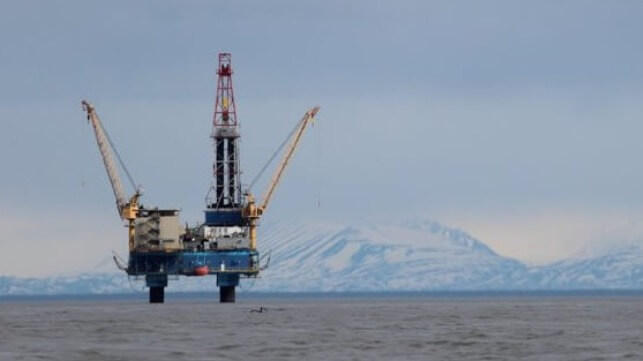Biden Administration Holds Alaska Offshore Oil and Gas Auction

The Biden administration on Friday, December 30 held the first offshore oil lease auction in five years for Alaska’s Cook Inlet. The president had pledged to end new leasing for offshore drilling in his administration but as part of a compromise for the passage of the Inflation Reduction Act agreed to conduct three new lease auctions, including this one in Alaska, despite vocal opposition from environmental groups.
The Department of the Interior had previously withdrawn a proposed sale in the Cook Inlet region reporting in May 2022 that there was little interest from the industry. However, the legislation passed by the U.S. Congress and signed into law in August required the Bureau of Ocean Energy Management (BOEM) to conduct the lease auction by December 31.
Complying with the law, BOEM published in November the details of Cook Inlet Outer Continental Shelf Oil & Gas Lease Sale 258. The sale which was part of a 2017 plan for the outer continental shelf offered for lease 193 blocks in the northern part of the Cook Inlet Planning Area, stretching roughly from Kalgin Island in the north to Augustine Island in the south.
BOEM reported tonight that it had received just one bid for only one of the 193 blocks. The bid for $63,983, was submitted by Hilcorp Alaska, a division of a Texas-based independent exploration and production company that invests in legacy assets. The company currently has 14 active federal leases in Cook Inlet, which it purchased at the last auction for the region in 2017. No production however has ever begun in any of the federal waters at Cook Inlet since it was first offered to the industry in the 1970s.
Environmental groups nonetheless on principle have sought to block further sales in the region. They point to government data that shows a 20 percent chance that a large oil spill could occur in the area. They also highlight that the Cook Inlet region is the most heavily populated region of Alaska with approximately 400,000 people living in the watershed.
“Today’s lease sale for dirty and dangerous offshore drilling represents the dark side of our nation’s climate law, the Inflation Reduction Act. Continued leasing for oil and gas undermines efforts to address the climate crisis,” said Diane Hoskins, campaign director for the non-profit Oceana, an advocacy group for ocean conservation. “Where oil companies drill, they spill, and that’s why it’s time for President Biden to fulfill his campaign commitment to end new leasing for offshore drilling. The president can make good on his promise by finalizing a five-year plan for offshore drilling with no new leases.”
In addition to the Alaska leases, the act also requires BOEM to proceed with an Environmental Impact Statement for two Gulf of Mexico oil and gas lease sales, Lease Sales 259 and 261. Congress directed that Lease Sale 259 be held by March 31, 2023, and Lease Sale 261 by September 30, 2023.

that matters most
Get the latest maritime news delivered to your inbox daily.
The Department of the Interior is reported to be moving forward on a new Five-Year Leasing Plan, while the factions in the oil and gas debate push for new lease areas or an outright ban. The president’s much-touted piece of legislation included a focus on the energy transition, but among the compromises was the inclusion of the oil leases and also ties for new offshore wind leasing to offshore oil and gas leases. The language included in the act required that, in order to hold a new offshore wind lease sale, at least one offshore oil and gas lease sale that offered at least 60 million acres be held within the year prior to the new offshore wind sale.
Top photo from Ground Truth Trekking - CC BY-NC 3.0 license
